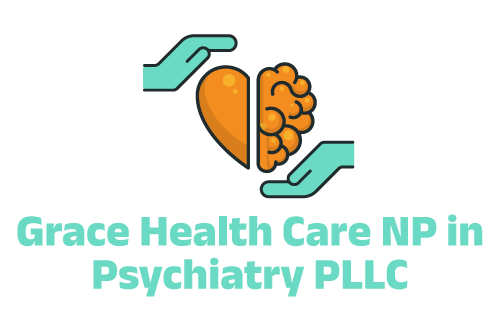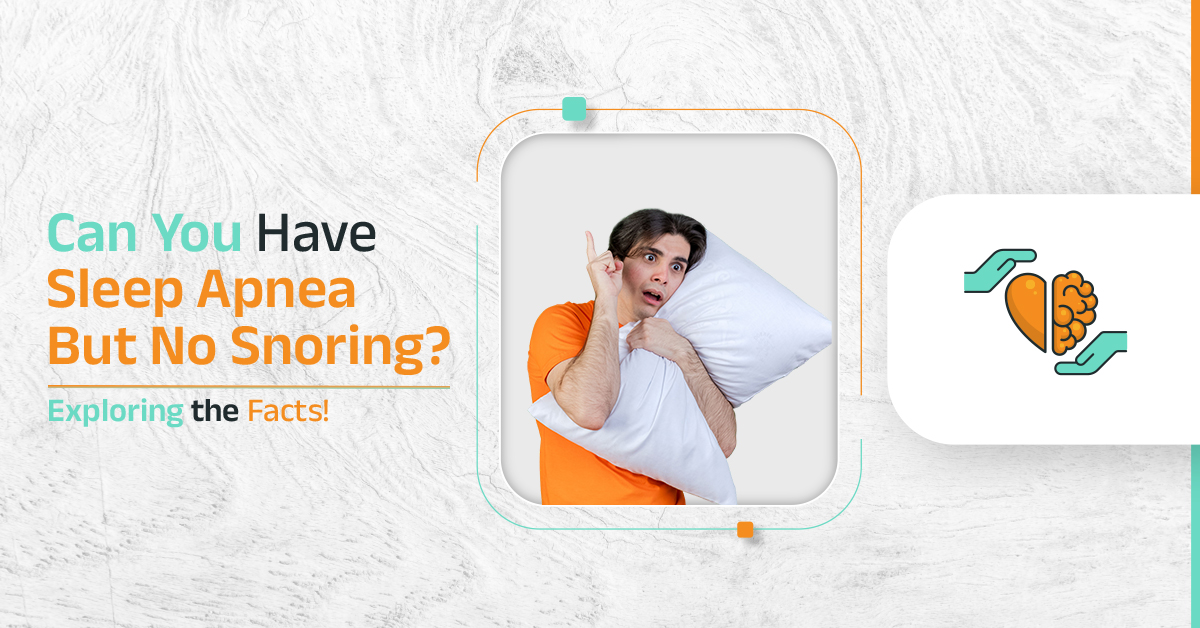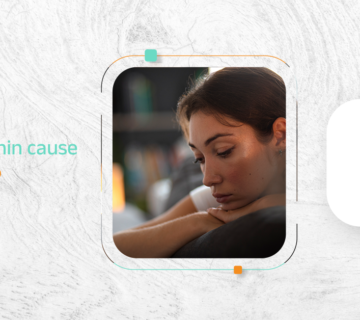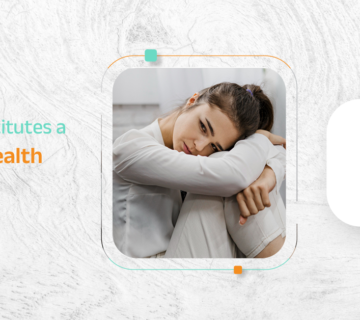Sleep apnea usually connects to very loud snoring that bothers others. Many think snoring always points to sleep apnea. But not all people with this problem snore. It’s possible to have sleep apnea but no snoring. This type is called “silent sleep apnea.” Because there is no loud noise at night, it can stay hidden for a long time.
What is silent sleep apnea? How do you know if you have it? We give the key points, signs, and steps to find out if it impacts you.
At Grace Healthcare, we specialize in diagnosing and treating silent sleep apnea. Our plans include lifestyle changes and ongoing support. They aim to improve your sleep and health. We’re here to help you rest better and live better. Contact us today.
What Is Sleep Apnea?
Sleep apnea is a sleep issue. It stops breathing again and again during sleep. These pauses are called “apneas.” They stop after a few seconds and block breathing. The common type is obstructive sleep apnea (OSA). OSA causes throat muscles to relax too much, blocking airflow.
A lot of people believe sleep apnea always involves loud snoring. But snoring doesn’t always happen with sleep apnea. This makes it harder to find since people might not guess they have a problem if snoring is absent. How might you tell if sleep apnea is affecting you without snoring? Take a look at the key signs and symptoms.
Symptoms of Sleep Apnea in Women and Men
Snoring often shows up as a symptom, but there are other clues if someone thinks they might have sleep apnea without snoring. The problem affects men and women, though some signs show up differently in each.
Symptoms of Sleep Apnea in Women:
Women may experience less obvious symptoms like:
- Chronic fatigue
- Insomnia or trouble staying asleep
- Morning headaches
- Mood swings and irritability
- Night sweats
These signs often get confused with other illnesses. How to find out if you have sleep apnea if snoring isn’t an issue?
Symptoms in Men:
Men, on the other hand, often display more typical symptoms like:
- Loud snoring (though not always)
- Pauses in breathing during sleep (noticed by a partner)
- Gasping or choking sounds while sleeping
- Daytime sleepiness or drowsiness
- Trouble focusing
If you notice these signs, it’s essential to test for sleep apnea quickly.
Can You Have Sleep Apnea without Snoring?
Yes, having sleep apnea but no snoring is possible. This type of problem is probably harder to notice because most people know snoring as a common sign of sleep apnea. Other signs, like waking up often, struggling to breathe, and feeling very tired during the day, might still show sleep apnea.
Silent sleep apnea has various types. However, the most common is obstructive sleep apnea without snoring. This happens when something blocks the air path and stops snoring because the throat is not shaking.
How to Tell If You Have Sleep Apnea without Snoring?
Wondering if sleep apnea affects you without snoring? Certain signs help identify it. Some signs are:
- Waking up tired even after having slept all night
- Gasping for air during sleep
- Extreme daytime drowsiness or falling asleep during activities
- Difficulty concentrating or memory issues
- Dry mouth or sore throat after waking
- High blood pressure
Do you notice any of these signs? Time to understand how to see if sleep apnea is an issue. Talk to a doctor.
Test for Sleep Apnea
Sleep apnea shows up for sure only after a sleep study. This test happens in a sleep lab or at home. The study checks breathing, oxygen levels, and how you sleep. These facts help doctors know if sleep apnea is present even when snoring is not heard.
There are some usual tests to find out if someone has sleep apnea.
- Polysomnography: This happens at night in a lab. Different parts of your sleep get checked, like brain activity, breathing, and heart function.
- Home Sleep Apnea Test (HSAT): If you cannot get to a lab, your doctor could suggest a test at home. These are easier and might spot silent sleep apnea by checking oxygen breath and chest movement.
Learning how to find out if you have sleep apnea through tests is important. Untreated sleep apnea may cause major health issues like heart trouble, stroke, or diabetes.
Silent Sleep Apnea: The Hidden Danger
Silent sleep apnea is dangerous because people may not know they have it for years. No snoring means there is no clear sign. Do they notice something? Maybe not until serious symptoms appear, like chronic fatigue or mood swings. Health problems might start, too.
It’s critical to recognize signs of silent sleep apnea and seek a test if you notice them. Also, conditions like snoring but no sleep apnea exist. So, it’s important to understand your symptoms before jumping to conclusions.
How to Check for Sleep Apnea at Home?
There are different ways to look for sleep apnea signs at home before seeing a doctor. Here are some options
- Sleep Journal: Record your sleep times, awakenings, and your mood in the morning.
- Partner Observations: When sharing a bed, ask if they saw you stop breathing or heard you gasp.
- Mobile Apps: Some apps track your breathing and oxygen while you sleep, but they might not be as good as real tests.
These ways help a lot, but seeing a doctor to check for sleep apnea is needed for an accurate diagnosis.
The Dangers of Silent Sleep Apnea
It’s common for people to go undiagnosed if they have sleep apnea but no snoring. Many individuals assume that without loud snoring, they must be sleeping fine. Silent sleep apnea is just as bad as regular sleep apnea. Over time, this problem leads to different health problems like:
- Heart disease
- Stroke
- Obesity
- Type 2 diabetes
- Higher chance of accidents from feeling sleepy during the day
If sleep apnea seems possible but you feel uncertain, a test for sleep apnea is important
Treatment Options for Sleep Apnea without Snoring
After being diagnosed with silent sleep apnea, you have many treatment options. Treatments for snorers are similar to those for non-snorers.
- CPAP Machine: Many people often use this for help. It goes over your nose and mouth at night. It helps you breathe easily while sleeping.
- Lifestyle Changes: Losing weight helps. Stopping smoking could fix things. Less alcohol also helps with the symptoms.
- Oral Appliances: Some people do not like the CPAP machine. A dental appliance designed to keep the airway open may be recommended.
- Surgery: For serious problems, surgery may happen. They remove some throat tissue or move your jaw a little.
Conclusion: Know the Facts about Sleep Apnea but No Snoring
Sleep apnea but no snoring is a serious condition. It can be harmful. Recognizing its symptoms is crucial. If you see any, consult a doctor.
Sleep apnea sometimes occurs even if there is no snoring. Snoring alone is not the sign. How do you know if you have sleep apnea? Testing is important for living a good life with good health.
FAQs
Q. What signs show sleep apnea in women?
Women with sleep apnea often feel tired all day. They struggle to sleep well. They get headaches when they wake up. Sudden shifts in mood also happen. These could be clues to silent sleep apnea in women.
Q. Can you have sleep apnea without snoring?
Yes, some people have sleep apnea without snoring. This type is called silent sleep apnea, which still brings big health problems even though loud snoring is not present.







No comment